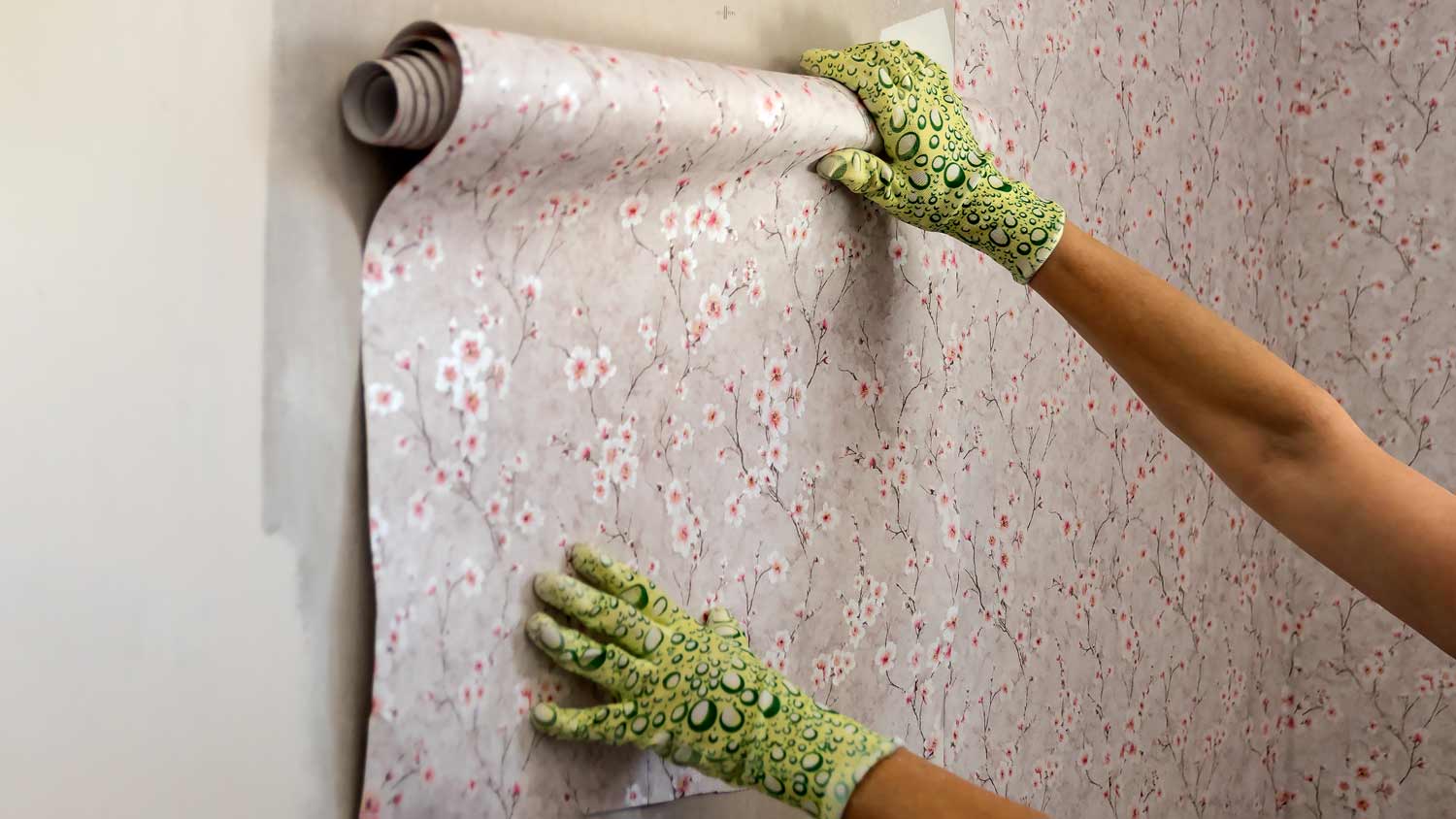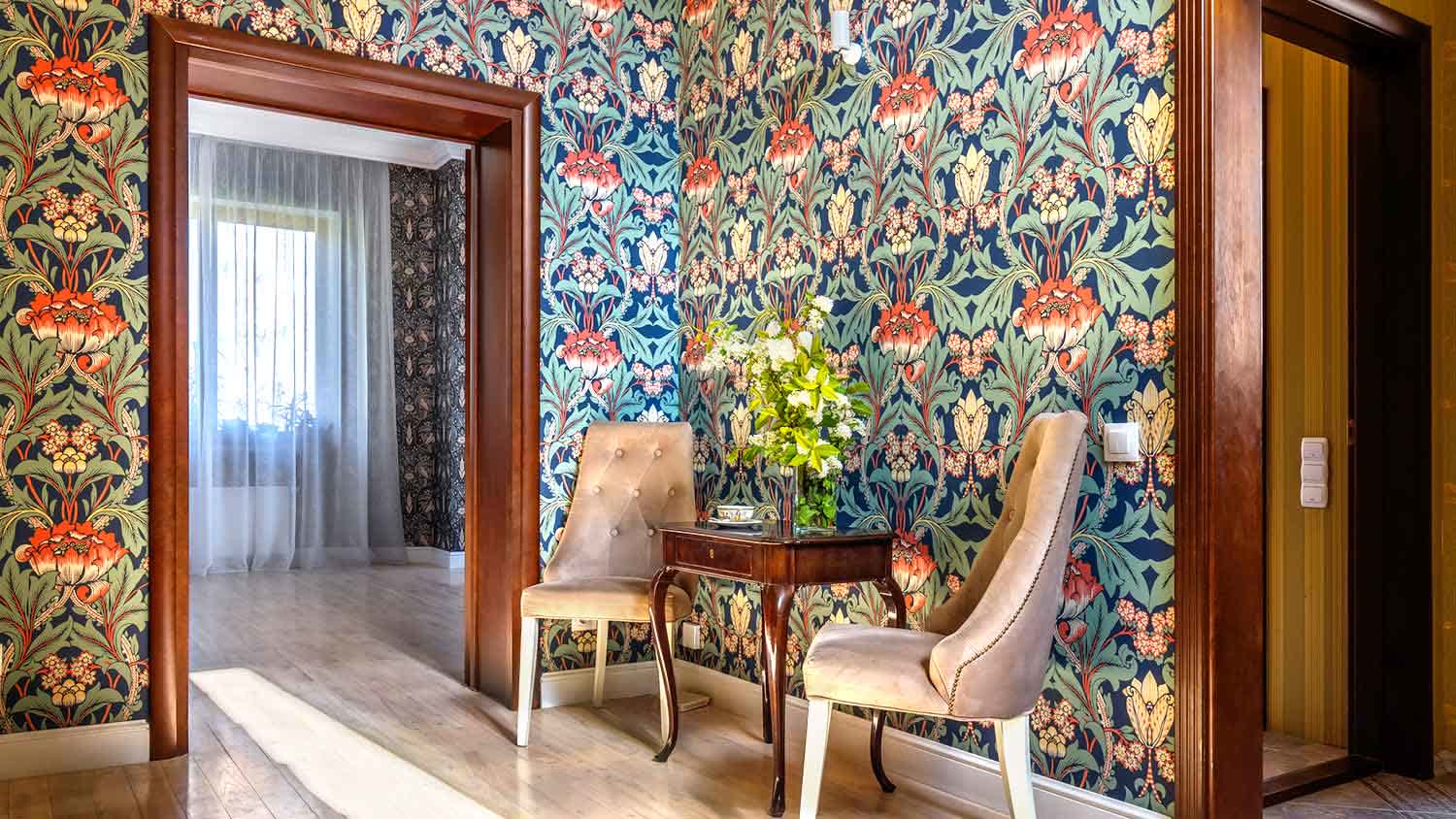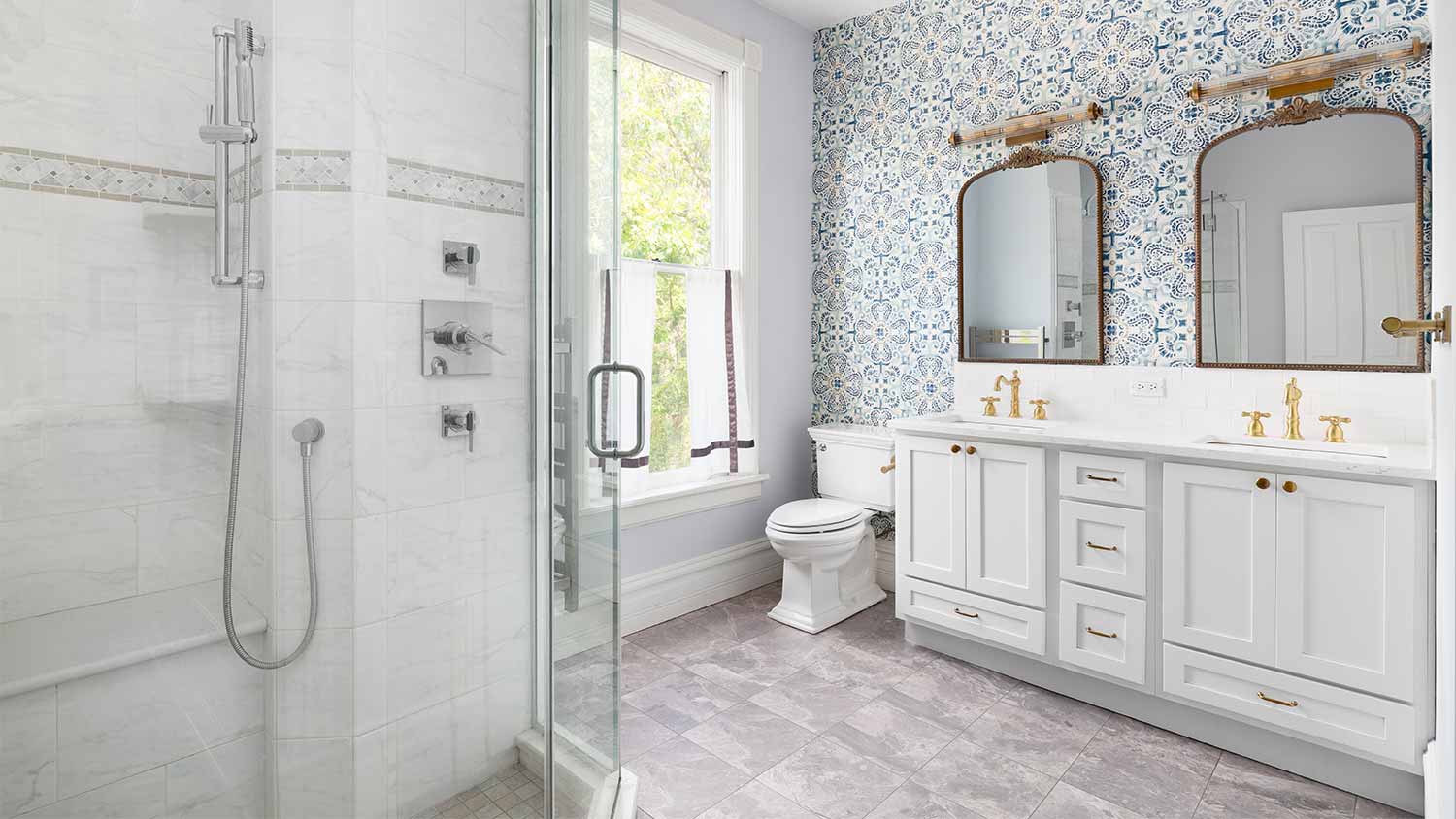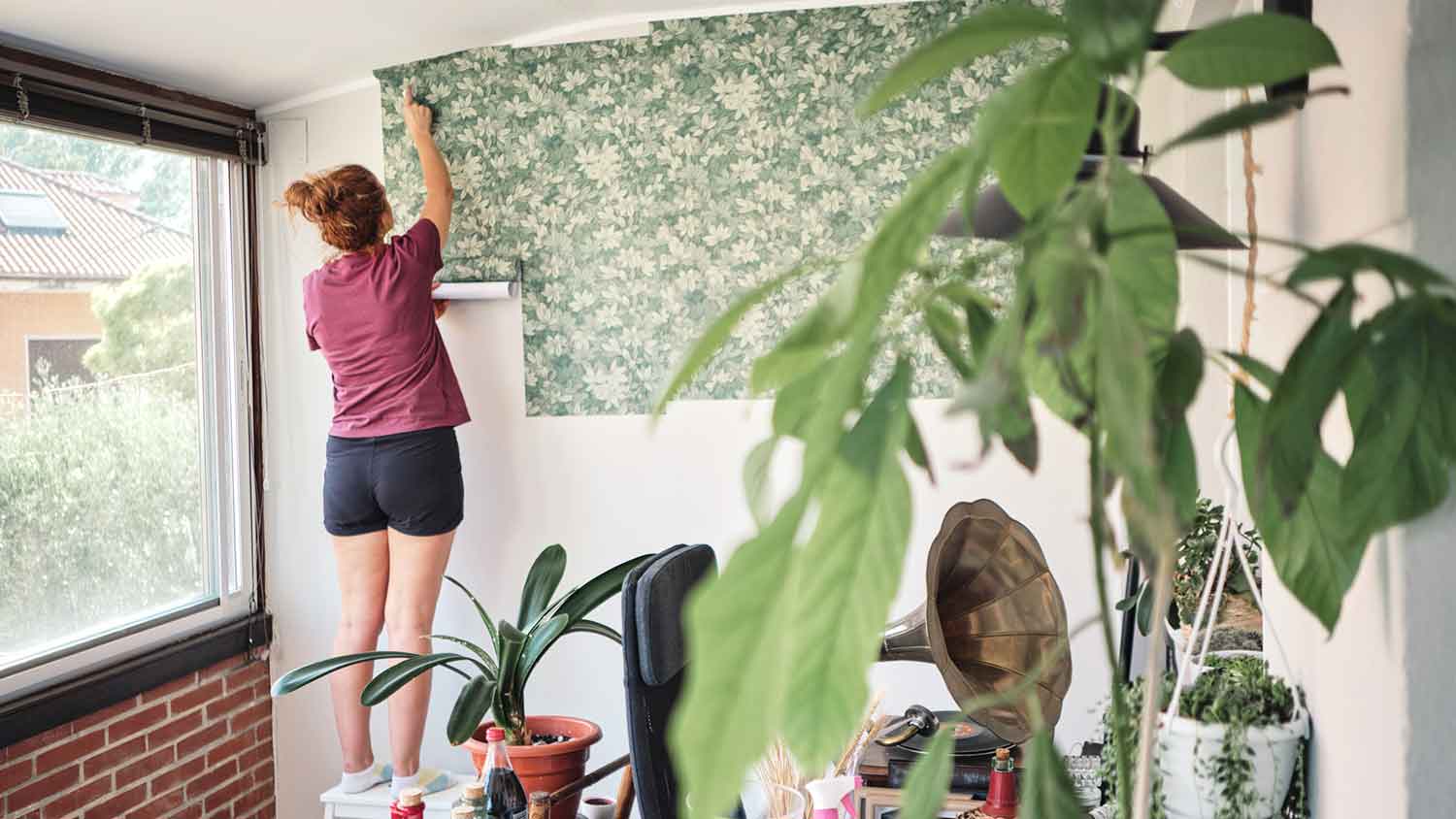
Discover wallpaper installation cost. Learn about material, labor, and project factors to estimate your budget and make informed choices for your home.


To calculate your wallpaper needs, you'll need to find the square footage of each wall you want to cover.
You'll also need to know the size of the wallpaper roll.
Patterns may require extra wallpaper to match up.
Ready to transform a room from "meh" to "wow?" Wallpaper can help. But first, you need to find the answer to "how much wallpaper do I need?" Nothing is more annoying than running out of wallpaper in the middle of the project, so use this wallpaper calculator to get the right amount.

To figure out how much wallpaper you'll need, make note of how large each roll is and the total square footage of the walls you want to cover, minus any openings such as windows and doors:
Number of Rolls Needed = Square Footage of Wall 1 + Square Footage of Wall 2 + Square Footage of Wall 3 + Square Footage of Wall 4 – Square Footage of Any Openings / Square Footage per Roll
To measure for wallpaper, use a steel measuring tape to measure the height and width of each wall you want to cover, not including baseboards, moldings, and other areas you don’t want to cover.
If the wall has large openings, such as a door, window, or fireplace, also measure the height and width of those, then subtract their square footage from the wall's total square footage. You don't have to worry about subtracting small openings, such as outlets or light switches.
If you're going to hang paper with a pattern, you'll most likely need a bit extra to allow the pattern to align and to keep the wall from looking crooked. Add about 10% of the total square footage to your wallpaper needs.
It can be worth it to hire a professional to hang wallpaper, as working with an experienced wallpaper installer can help you avoid buying too much (or too little) and ensure the finished project looks great.
Your best bet is to work with someone who specializes in installing wallpaper. If you can't find a local installer, another option is to hire a handyperson. Just make sure the handyperson has experience working with wallpaper.
From average costs to expert advice, get all the answers you need to get your job done.

Discover wallpaper installation cost. Learn about material, labor, and project factors to estimate your budget and make informed choices for your home.

Prepping for a DIY wallpaper project? One of your first tasks is learning how to measure for wallpaper. Here's how to calculate how much wallpaper you’ll need.

Wallpaper can be eye-catching and unique, but installing it is tricky. Use this guide to know who to hire to install wallpaper in your home.

Do you have wood-paneled walls you'd like to conceal? If you're wondering if you can install wallpaper over paneling, the answer is yes. Find out how.

Is washable wallpaper suitable for bathrooms? Yes, but this only applies to certain types of wallpaper in specific situations. Here’s what you need to know.

Is peel-and-stick wallpaper removable? Find out how to remove temporary wallpaper without causing damage to your walls.